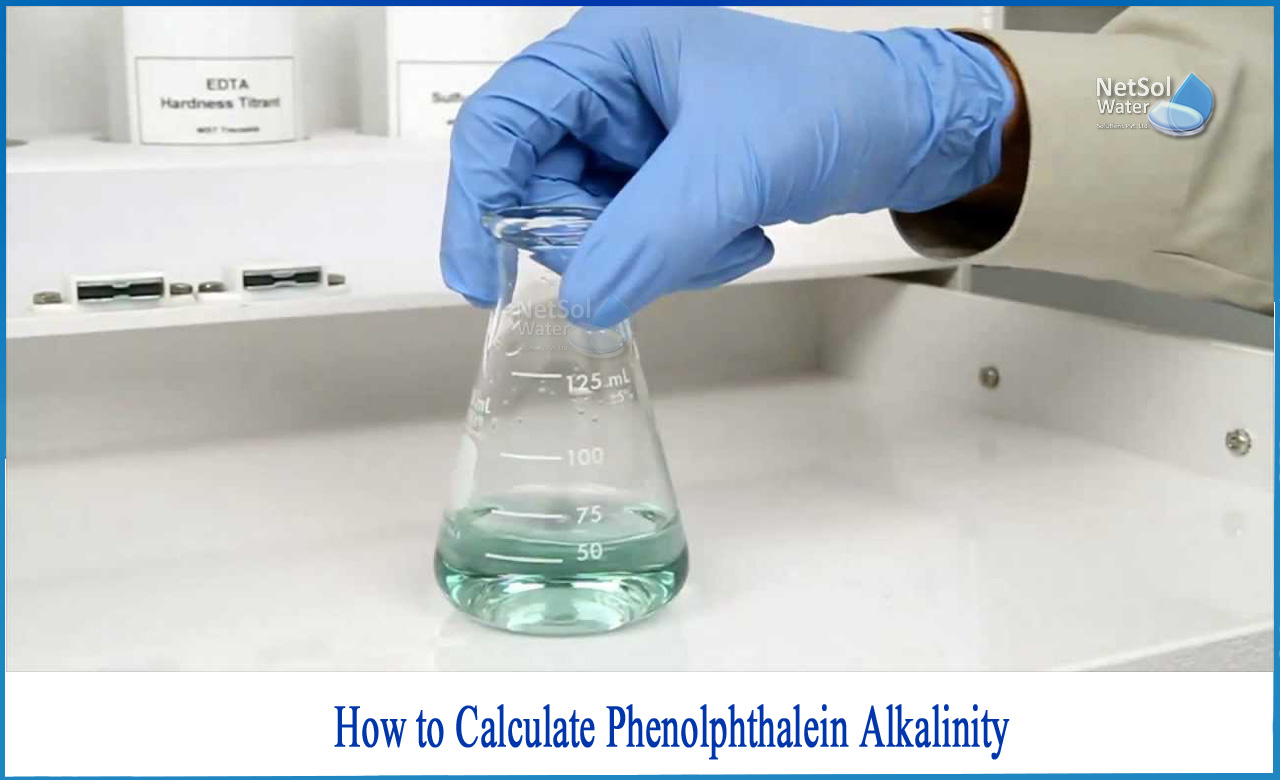How to calculate Phenolphthalein Alkalinity?
Alkalinity may be found in water. The amount is determined by the water's source, whether surface water (lakes and rivers) or groundwater (well water). Total alkalinity or phenolphthalein alkalinity are two ways to measure alkalinity. At a pH of 8.3, phenolphthalein alkalinity measures the hydroxides and half of the carbonates. At a pH of 4.5, total alkalinity is defined as the sum of all carbonate, bicarbonate, and hydroxide alkalinity (approximately).
Determination of Alkalinity in laboratory
Titration of the sample to an end point pH of 8.3, which corresponds to the end point of the phenolphthalein indicator, is used to determine phenolphthalein alkalinity.
The total alkalinity of a sample is determined by titrating it to a pH of 4.5, which corresponds to the end point of the bromocresol green-methyl red indicator. Total alkalinity measurements comprise all of the titrant added from the beginning of the titration (including the titrant used to get to the Phenolphthalein end) when executing a sequential titration to measure both phenolphthalein and total alkalinity.
For the phenolphthalein alkalinity test, you will need the following indicator:Phenolphthalein indicator, in a 50 to 100 mL dropping bottle.
Phenolphthalein Alkalinity Procedure
1. Clean the burette and fill it with N/50 sulphuric acid almost to the top. Then, until the "zero" mark is achieved, run some acid to waste. The stopcock and tip of the burette should be filled of solution at this point.
2. Pour 100 milliliters of the water to be tested into a clean white porcelain evaporating dish. The sample should be stirred.
3. Add 5 drops of phenolphthalein indicator to the sample with a dropping bottle and mix. The solution becomes pink when phenolphthalein alkalinity is present. The absence of colour shows that the phenolphthalein alkalinity is zero, and the test is finished. Free carbon dioxide is present if there is no colour, and the same sample may be used to test for carbon dioxide.
4. If a pink hue occurs after adding the indicator, add N/50 sulphuric acid from the burette gently and cautiously to the contents of the dish until the color fades. The solution should be carefully mixed with the stirring rod while adding the acid.
5. Keep track of how much sulphuric acid was needed to get to the goal.
In this scenario, phenolphthalein is utilized to show when pH 8.3 is attained, shifting colour from pink-fuchsia when pH > 8.3 to colorless when pH 8.3 is reached. Methyl orange or methyl purple dyes can be used to measure total alkalinity.
Need of water softening
Water softening is the process of removing hardness from it. Hard water is a concern for a variety of reasons. Soap precipitates out of water in hard water, forming scum, such as the ring that develops around bathtubs. In addition to being unattractive, the combination of hard water with soap causes an overabundance of soap and detergents to be used. Hard water may also affect the flavor of drinking water and limit the lifespan of materials washed in it. Finally, because hard water may impair many industrial processes, companies frequently demand considerably softer water than the general population.
Netsol Water is Greater Noida-based leading water & wastewater treatment plant manufacturer. We are industry's most demanding company based on client review and work quality. We are known as best commercial RO plant manufacturers, industrial RO plant manufacturer, sewage treatment plant manufacturer, Water Softener Plant Manufacturers and effluent treatment plant manufacturers. Apart from this 24x7 customer support is our USP. Call on +91-9650608473, or write us at enquiry@netsolwater.com for any support, inquiry or product-purchase related query.



